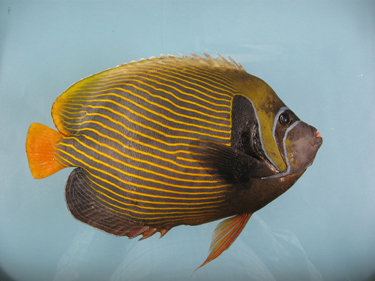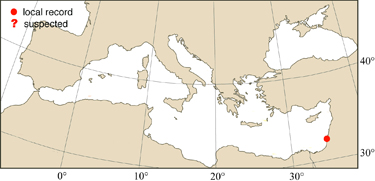
|
Relevant synonyms
Misidentification
Meristic formula
|
|
| photo: Daniel Golani |
|
SHORT
DESCRIPTION
color of adult: body and posterior portion of dorsal fin with diagonal alternating stripes of narrow yellow and wider bluish-purple. Black mask with bluish margin on the eye. Large black triangular area stretches from the pectoral fin base upward. Posterior dorsal fin and caudal are yellow. Anal fin grey to reddish-brown with blue stripes. Pectoral fin dark grey and pelvic fin dark-bluish grey with orange rays; color of young specimens (up to 14 cm TL): body dark blue with white and blue vertical stripes on the head curving progressively and forming circles on the posterior half of the body.
size : common 10-30 cm (max. 40 cm). |
DISTINGUISHING CHARACTERISTICS
BIOLOGY / ECOLOGY
habitat : among coral reefs and rocky habitats at depth of 5-60 m. |
|
1st
MEDITERRANEAN RECORD
|

|
|
DISTRIBUTION
|
ESTABLISHMENT SUCCESS
speculated reasons for success :
|
|
|
MODE OF
INTRODUCTION |
IMPORTANCE TO
HUMANS |
|
KEY
REFERENCES
|